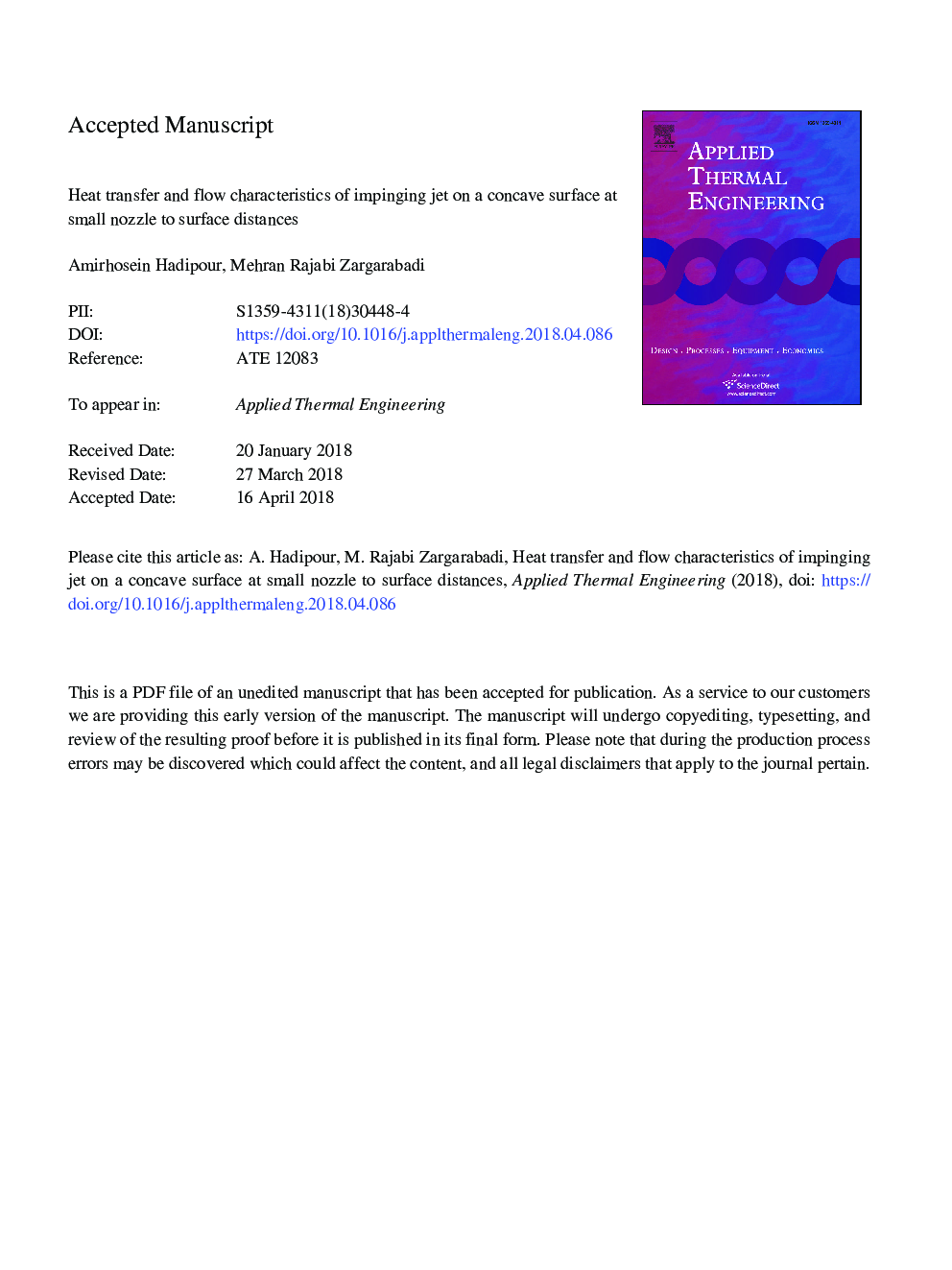| Article ID | Journal | Published Year | Pages | File Type |
|---|---|---|---|---|
| 7045294 | Applied Thermal Engineering | 2018 | 18 Pages |
Abstract
Experimental and numerical investigations were carried out to analyze the flow and heat transfer characteristics of an impinging jet on a concave surface at small jet-to-surface distances. Constant heat flux of 2000â¯W/m2 is applied on the concave surface using a silicon rubber heater mat. In the steady-state condition, the temperature distribution of the concave surface is measured with an infrared camera. In the experimental study, a jet with 24â¯mm diameter and cylindrical surface with the curvature radius of 12â¯cm (Crâ¯=â¯0.1) has been considered. The study of flow and heat transfer characteristics have been performed for different jet Reynolds numbers (10,000-35,000) and various nozzle diameters (18-30â¯mm). The distributions of velocity and Nusselt number for small jet-to-surface distances (H/Dâ¯<â¯1.0) have been compared with large jet-to-surface distances (H/Dâ¯â¥â¯1.0). Comparisons between numerical results and experimental data confirm that the numerical predictions performed by SST k-Ï model fairly predict the velocity and Nusselt number distributions. Experimental and numerical results confirm that the jets with small nozzle-to-surface distances (H/Dâ¯=â¯0.1, 0.2 and 0.4) provide a much more Nusselt number distributions in comparison with the surfaces with the large nozzle-to-surface distances (H/Dâ¯=â¯1.0, 2.0 and 4.0). The correlated equations of the averaged Nusselt number reveal that the Nuâ¾ is related to (H/D)-0.54 and (H/D)-0.14 for small (H/Dâ¯<â¯1.0) and large (H/Dâ¯>â¯1.0) jet-to-surface distances respectively.
Related Topics
Physical Sciences and Engineering
Chemical Engineering
Fluid Flow and Transfer Processes
Authors
Amirhosein Hadipour, Mehran Rajabi Zargarabadi,
